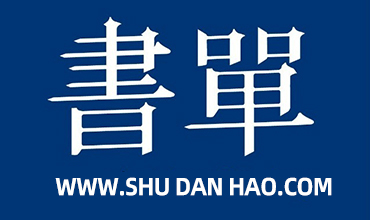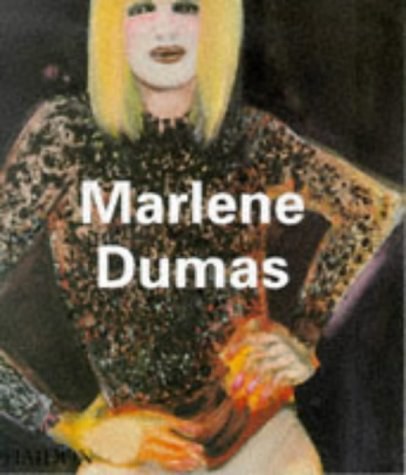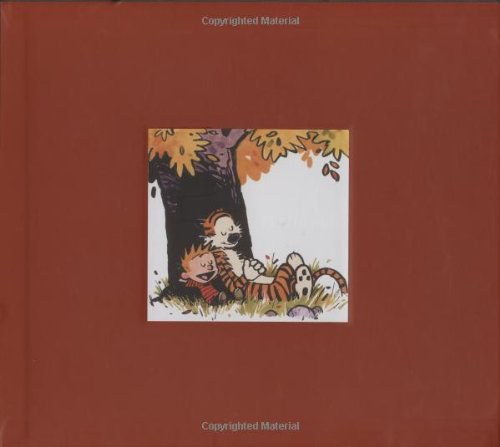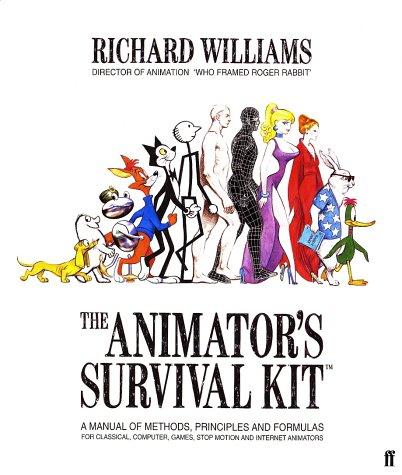
Ian Lloyd《Build Your Own Website The Right Way Using HTML & CSS》
书刊介绍
内容简介
一本给初学者的HTML+CSS 入门书籍
作品目录
Preface
What is a Browser?
Who Should Read This Book
What You’ll Learn from This Book
How You’ll Learn to Build Your Website
HTML, Markup, CSS — Welcome to Your First Bits of Jargon!
Building the Example Site
What This Book Won’t Tell You
What’s in This Book
Where to Find Help
The SitePoint Forums
The Book’s Website
The SitePoint Newsletters
The SitePoint Podcast
Your Feedback
Acknowledgements
Conventions Used in This Book
Markup Samples
Tips, Notes, and Warnings
1. Setting Up Shop
The Basic Tools You Need
Windows Basic Tools
Mac OS X Basic Tools
Beyond the Basic Tools
Windows Tools
Mac OS X Tools
Not Just Text, Text, Text
Windows Tools
Mac OS X Tools
Online Tools
Creating a Spot for Your Website
Windows
Mac OS X
Summary
2. Your First Web Pages
Nice to Meet You, HTML
Anatomy of a Web Page
Viewing the Source
Basic Requirements of a Web Page
The Doctype
The html Element
The head Element
The title Element
meta Elements
Other head Elements
The body Element
The Most Basic Web Page in the World
Headings and Document Hierarchy
Paragraphs
For People Who Love Lists
Commenting Your HTML
Symbols
Diving into Our Website
The Home Page: the Starting Point for All Websites
Splitting Up the Page
Linking Between Our New Pages
The blockquote (Who said that?)
The cite Element
strong and em
Taking a Break
Summary
3. Adding Some Style
What is CSS?
Inline Styles
Adding Inline Styles
The span Element
Embedded Styles
Jargon Break
Why Embedded Styles Are Better Than Inline Styles
External stylesheets
Why External Stylesheets Are Better Than Embedded Styles
Creating an External CSS File
Linking CSS to a Web Page
Starting to Build Our Stylesheet
Stylish Headings
A Mixture of New Styles
A New Look in a Flash!
A Beginner’s Palette of Styling Options
Recap: the Style Story so Far
Looking at Elements in Context
Contextual Selectors
Grouping Styles
Which Rule Wins?
Recapping Our Progress
Styling Links
Class Selectors
Styling Partial Text Using span
Summary
4. Shaping Up Using CSS
Block-level Elements versus Inline Elements
Block-level Elements
Inline Elements
Inline Begets Inline
Inline Elements Can Never Contain Block-level Elements
Styling Inline and Block-level Elements
Sizing Up the Blocks
Setting a Width
Setting a Height
Adding Borders to Block-level Elements
Example Borders
Styling Individual Sides of an Element
Shorthand Border Styles
Border Styles You Can Use
Shaping and Sizing Our Diving Site
Adding Padding
Introducing Padding to the Project Site
Margins
The Box Model
Positioning Elements Anywhere You Like!
Showing the Structure
Absolute Positioning
Other Layout Options
More Absolute Positioning
Relative Positioning
Floated Positioning
Styling Lists
Summary
5. Picture This! Using Images on Your Website
Inline Images
Anatomy of the Image Element
Web Accessibility
JPEG versus GIF versus PNG
Transparency
PNG: King of Transparency
Adding an Image Gallery to the Site
Updating the Navigation
Adding the New Gallery Page
Adding the First Image
Formatting the Picture Using CSS
Captioning the Picture
Basic Image Editing
Image Cropping
Special Effects
Resizing Large Images
Other Software
Filling up the Gallery
Sourcing Images for Your Website
Background Images in CSS
Repeated Patterns
Nonrepeating Images
Shorthand Backgrounds
Fixed Heights and Widths
Setting a Background for Our Navigation
Summary
6. Tables: Tools for Organizing Data
What is a Table?
Anatomy of a Table
Styling the Table
Borders, Spacing, and Alignment
Making Your Tables Accessible
Linearization
summary
Captioning Your Table
Adding an Events Table
Stylish Table Cells
Advanced Tables
Merging Table Cells
Advanced Accessibility
Summary
7. Forms: Interacting with Your Audience
Anatomy of a Form
A Simple Form
The Building Blocks of a Form
The form Element
The fieldset and legend Elements
The label Element
The input Element
The select Element
The textarea Element
Submit Buttons
The Default Control Appearance
Building a Contact Page
Editing the Contact Us Page
Adding a form and a fieldset Element
Styling fieldset and legend with CSS
Adding Text Input Controls
Tidying Up label Elements with CSS
Adding a select Element
Adding a textarea Element
Adding Radio Buttons and Checkboxes
Completing the Form: a Submit Button
Processing the Form
Signing Up for Form Processing
Inserting the Form Code
Feedback By Email
Summary
8. Interacting with Social Media
But Facebook is the Internet, right?
Go Where the Audience Is
A Two-pronged Attack: Facebook and Twitter
Setting Up a Facebook Page
Adding a Like Box to Your Site
Let’s Sprinkle on Some Twitter Glitter
Adding Your Twitter Updates to the Site
Getting a Follow Button
Updating from a Twitter Client on Your Smartphone
But the Page Looks Really Messy Now!
Get Twitter to Update Facebook to Update Your Site
Now the Training Wheels Are Off …
Get Smart!
Summary
9. Launching Your Website
The Client—Server Model
Web Hosting Jargon
Hosting Your Website—Finding Server Space
Free Hosting—with a Catch!
Free Hosting—with a Domain Name at Cost
What is Web Forwarding?
The Downsides of Web Forwarding
Paying for Web Hosting
Hosting Essentials
FTP Access to Your Server
Adequate Storage Space
A Reasonable Bandwidth Allowance
Hosting Nice-to-haves
Email Accounts
Server Side Includes (SSIs)
Support for Scripting Languages and Databases
Pre-flight Check: How Do Your Pages Look in Different Browsers?
Uploading Files to Your Server
FTP Settings
Uploading with FileZilla for Windows
Uploading with Cyberduck—Mac OS X
Other Uploading Tools
Where’s Your Site At?
Checking Links
Validating Your Web Pages
Promoting Your Website
Submit Your Website to Search Engines
Tell Your Friends and Colleagues
Craft an Email Signature with Your Website Details
Post on a Related Forum
Link Exchange
Summary
10. Enhancing the Site with HTML5 and CSS3
HTML5: A Brief History
CSS3 —CSS2 —what’s the difference?
CSS3: Not Yet Universally Supported
The Good News on CSS3
Look at All Those Sharp, Pointy Corners!
The Details in the Shadows
From box-shadow to text-shadow
We Don’t Serve Your Type Around Here!
Other CSS3 Features to be Aware of
IE as a Second-class Citizen
Summary
11. Adding Interactivity with jQuery
JavaScript? jQuery? What’s the difference?
Standard JavaScript versus jQuery: A Simple Example
How do I get jQuery and use it?
Hang On a Moment!
jQuery: Primed and Ready For Action
Using jQuery on the Project Site
Setting Up References to jQuery
Adding Default Form Value
Showing the Picture Gallery’s Captions on Hover
Summary
12. What to Do When Things Go Wrong
Prevention
Keep Multiple Browsers Open While Developing
Validate HTML and CSS as You Go
Learn About Known Browser CSS Bugs
Prepare Your Browser for Battle—with Extensions!
Inspecting Problems with Firebug
Web Developer Toolbar
Disable CSS
Disable JavaScript
Outline Elements on the Page
Hide Images or Reveal alt Attributes
View Information about CSS and JavaScript
And So Much More …
How to use XRAY
Summary
13. Pimp My Site: Cool Stuff You Can Add for Free
Getting the Low-down on Your Visitors
Choosing a Statistics Service
Registering a Google Account
Adding the Statistics Code to Your Web Pages
A Search Tool for Your Site
Searching by Genre
Enhancing Search Further with jQuery
Discussion Forums
Summary
14. Where to Now? What You Could Learn Next
Improving Your HTML
The Official Documentation
Other Useful HTML Resources
Advancing Your CSS Knowledge
The Official Documentation
The Ultimate CSS Reference
HTML Dog
CSS3.info
CSS Discussion Lists
The CSS Discuss List’s Companion Site
Learning JavaScript
Becoming a jQuery Guru
Improving Website Performance
Learning Server-side Programming
Scripting Languages in Brief
Learning PHP
Summary
Index
相关推荐
-

计算机基础及Photoshop应用-全国计算机等级考试一级教程-(2017年版)
计算机基础及Photoshop应用-全国计算机等级考试一级教程-(2017年版) 本书特色 《全国计算机等级考试一级教程——计算机基础及...
-

ROS机器人编程实践
《ROS机器人编程实践》内容简介:ROS工程师经常面临使用机器人操作系统(ROS)基础设施并将物理机器人连接到机器人仿真系统的挑战。
-

章莉莉《标志设计完全手册》
标志作为企业与消费大众的视觉沟通途径,帮助企业建立一个健康良好的形象。那么,标志设计是什么?标志设计的发展史是怎样的?我
-

理财防骗手册(好规划专刊002期)
《理财防骗手册(好规划专刊002期)》内容简介:MMM和百川币,月赚30%投的是什么?号称“低风险、高收益”的原油投资靠谱吗?电信、
-

微分几何大师:陈省身传
《微分几何大师:陈省身传》内容简介:陈省身对中国乃至整个世界的数学发展作出了杰出的贡献,他的数学成就遍及射影微分几何、欧几
-

《通信企业市场营销》书籍《通信企业市场营销》
《通信企业市场营销》结合作者多年来从事电信企业市场营销理论研究的成果,以及我国电信企业的市场营销活动和实践,论述了市场营
-
![[美] 博克斯《.NET本质论 第1卷:公共语言运行库》](http://oss.shudanhao.com/caiji/chazidian/2023/3341.jpg)
[美] 博克斯《.NET本质论 第1卷:公共语言运行库》
DonBox是微软公司的架构师,主要研究方向为下一代Web服务协议和程序设计模型。Don是软件集成技术方面的权威。在上世纪90年代,他
-

2020—2021年中国网络可信身份服务发展蓝皮书(精装版)
《2020—2021年中国网络可信身份服务发展蓝皮书(精装版)》内容简介:在国家政策支持下,2020年我国网络可信身份服务业发展迅猛,
-

满舟《黑客攻击防范秘技(含盘)》
本书共由三章组成,第一章“网络安全篇”介绍了网络安全的概念、网络安全的问题及对策、漏洞资料。第二章“黑客揭密篇”介绍了黑
-

战略执行力
《战略执行力》内容简介:三分战略,七分执行。无论组织决策有多好、思路如何清晰,如果不能付诸实践,不执行到位,一切都会成为纸
-

互联网的未来-光荣.毁灭与救赎的预言
互联网的未来-光荣.毁灭与救赎的预言 目录 译者序引言**部分可繁殖网络的兴起和停滞**章盒子的战争第二章网络的战争第三章网络安全与自我繁殖的两难第二部分停滞之...
-

《高性能MySQL(第二版)》书籍《高性能MySQL(第二版)》
BaronSchwartz是一名软件工程师,他住在弗吉尼亚州的Charlottesville,在网上用的名字是Xaprb,这是他名字的第一部分按QWERTY键盘
-

中文版Word 2003实例与操作-(含1CD)
中文版Word 2003实例与操作-(含1CD) 本书特色 《中文版Word 2003实例与操作》:德国亚琛计算机教育中心北京金企鹅文化发展中心联合策划新世纪计...
-

靳埭强《视觉传达设计实践》
靳埭强1942年生于广东番禺,1957年定居香港,1964年开始研习艺术与设计,1967年开始设计工作,获奖无数。靳氏于1969年开始水墨创
-

崛起的中国数字经济(2018Number1)
《崛起的中国数字经济(2018Number1)》内容简介:去中介化(Disintermediation)、分散化(Disaggregation)和非物质化(De...
-

胡中为《普通天文学》
全书系统地介绍现代天文知识。绪论简介天文学的发展和字宙概观。用十二章依次阐述天球和星空、天体运动和距离测量、天体辐射和天
-

W·Jason Gilmore《Beginning PHP and MySQL 5》
BeginningPHPandMySQL5:FromNovicetoProfessional,SecondEditionofferscomprehensivei...
-

全草类中草药彩色图鉴
《全草类中草药彩色图鉴》内容简介:本书收载了常用全草类中草药100种,详细介绍了每种中草药的别名、来源、产地、采收加工、原植物
-

从零开始学炒股(实战操练图解版)
《从零开始学炒股(实战操练图解版)》内容简介:作为投资成本相对较少、变现灵活的一种投资方式,股票投资受广大投资者喜爱;但也
-

语义Web服务匹配及其应用
语义Web服务匹配及其应用 内容简介 《语义Web服务匹配及其应用》系统介绍了语义Web服务研究的相关概念、研究现状、*新进展、语义Web服务匹配算法及语义We...





